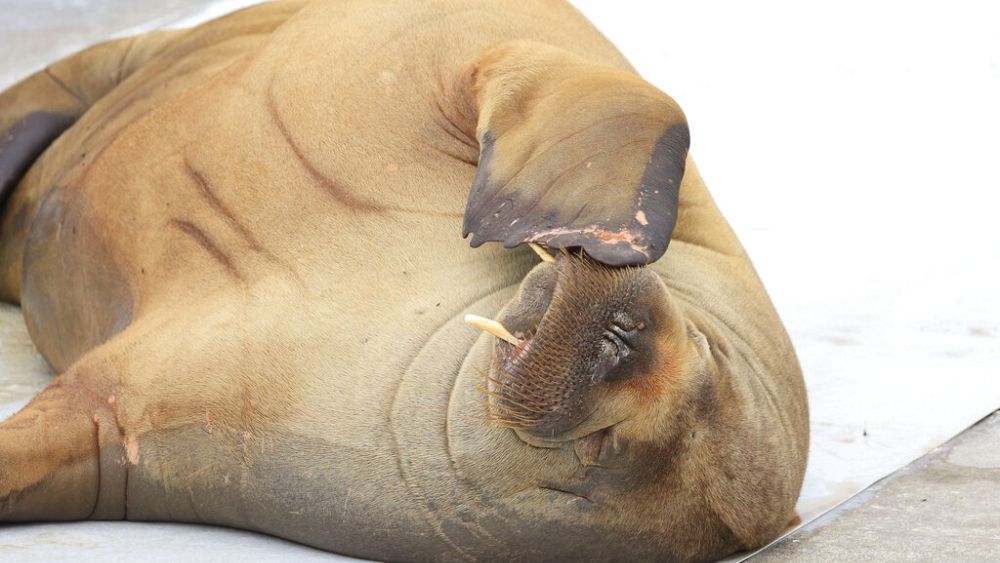Freya the walrus: Mischievous boat-sinker euthanised in Norway

Norwegian authorities have put down a walrus that gained international notoriety for its mischievous activities in Oslo.
Freya the walrus was euthanised on Sunday after officials said she was putting people’s lives at risk and was herself in distress.
Critics of the decision say it was too hasty, though authorities claim it was the only “viable” option.
“The decision to euthanise the walrus was made based on an overall assessment of the continuing threat to human safety,” Norwegian Fisheries Directorate official Frank Bakke-Jensen said in a statement.
Freya, who is named after a Norse goddess, whipped up a social media storm in recent weeks, after she was filmed clambering aboard several boats and inflatables anchored along the Nordic coast.
Walruses are native to the Arctic circle. However, Freya ended up loitering in Oslo’s Frognerkilen bay, having been spotted in Denmark, Germany, the Netherlands and Scotland beforehand.
The presence of the young female, weighing 700 kilos, was the subject of concern for some, who said she was damaging boats.
“We carefully considered all possible solutions,” Bakke-Jensen said. “We concluded that we could not guarantee the welfare of the animal by any means available.”
Authorities had warned Thursday that Freya could be euthanised if the public did not stay away from the mammal.
A campaign called “Let Freya Live” was launched by Norway’s Green party shortly after this warning was issued.
Campaigners previously recommend on Instagram that the walrus should be sedated and moved out of populated areas or taken back to her native habitat, while urging people to “leave her alone.”
Other experts have said that the decision to euthanise Freya did not take her welfare into account.
“It’s very shocking,” said Siri Martinsen, a spokesperson for NOAH animal protection. “We are in a situation that offers an opportunity to show consideration for wild animals.”
She added that it was too soon to put Freya down.
“We should have tried fines,” said Martinsen. “Then we would probably have seen these masses of people disappear quickly.”
Despite instructions by the authorities, many people approached the walrus excessively, often to photograph it, and bathed near Freya.
“It is infinitely sad that they chose to euthanise such a beautiful animal simply because we did not behave well with him,” said biologist Rune Aae, interviewed by the local agency NTB.
The Fisheries Directorate had argued that the well-being of Freya, who was around five years old, had declined significantly, with experts believing she was in distress.
Although walruses do not normally attack people, they can — according to the authorities — lash out if they feel threatened by unwelcome advances.
A protected species, walruses feed mainly on invertebrates such as molluscs, shrimps, crabs and small fish.
Relocating Freya “was not a viable option” because of its complexity, said the Fisheries Directorate.
In France, an operation to rescue a beluga whale from the River Seine, where it had gotten lost, ended in failure and the animal had to be euthanised.
